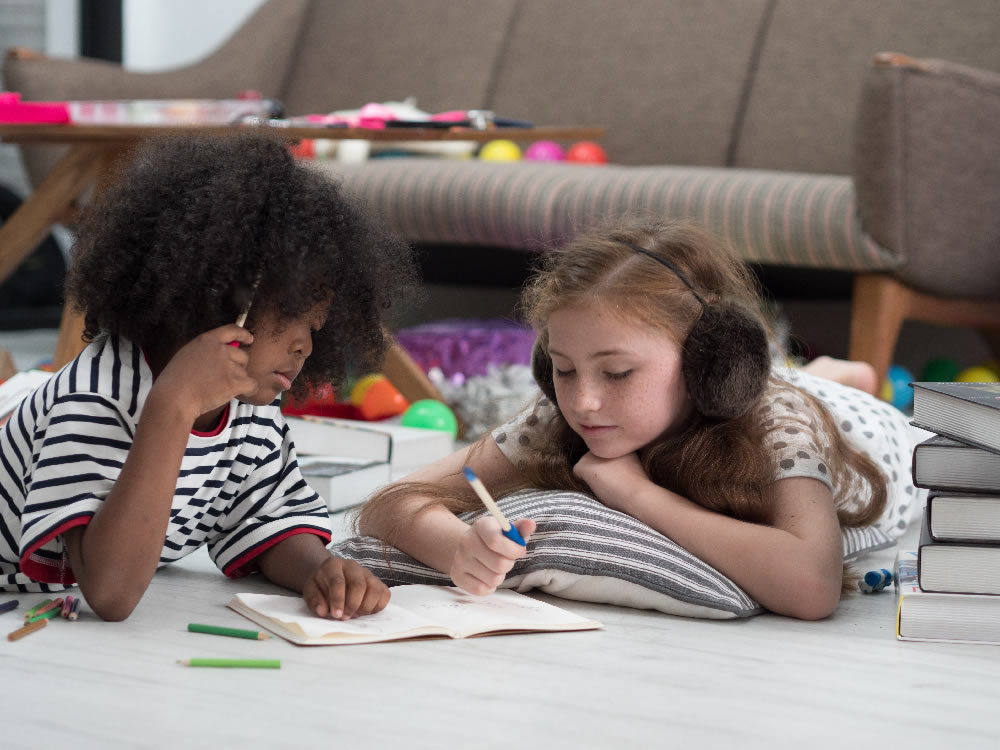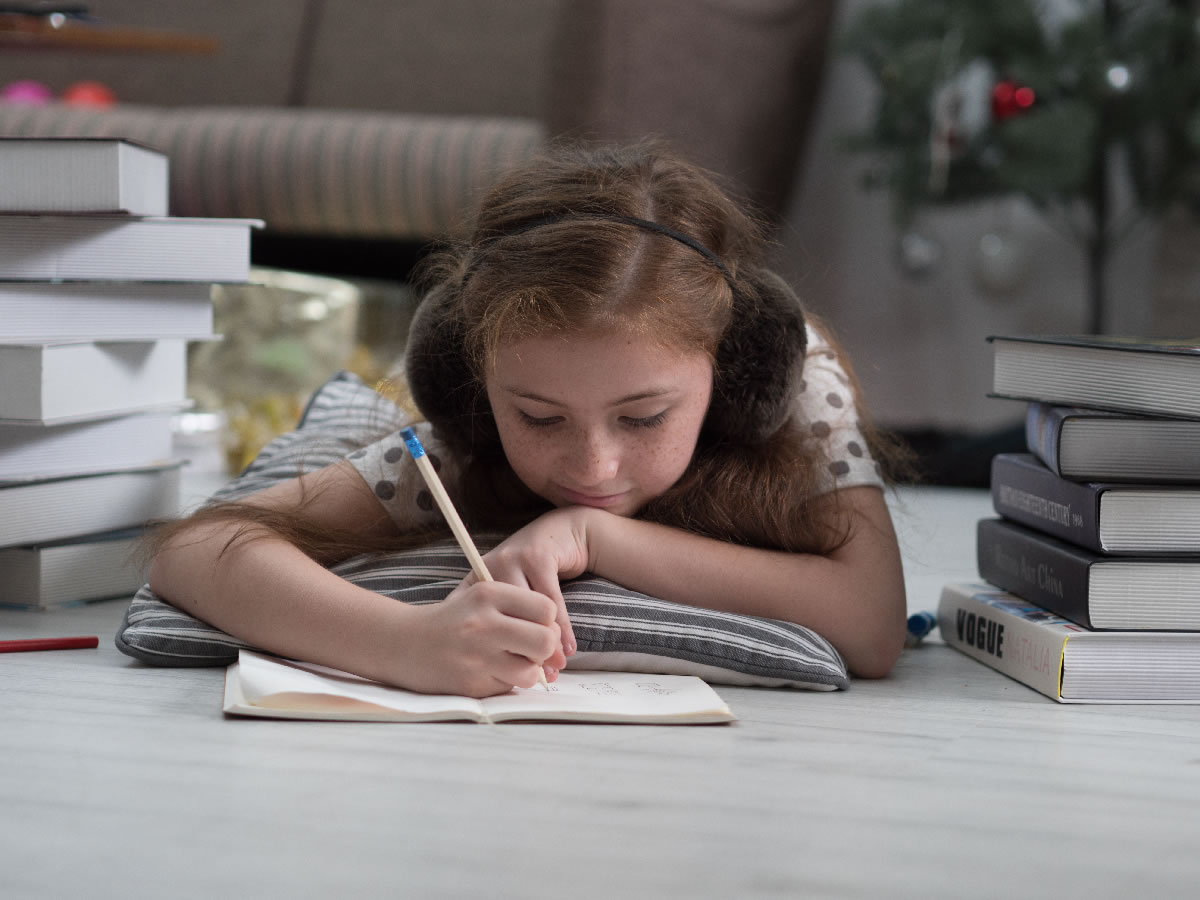Although reading and writing are two closely related learning processes , they retain their individuality. Berninger (2000) states that “reading and writing are, to some extent, two different systems. We are not talking about a single economic process called literacy, where it seems that steps and times are integrated into a single path. No, they are two processes that follow a path in the same direction, with paths sometimes parallel, sometimes divergent, sometimes asynchronous, sometimes intertwined. Two processes, two times ”.
Writing has at least two functions: manual or calligraphic , that is, the motor ability to capture with an instrument – for example, pencil, pen or computer – the graphic representations of the words and ideas that we wish to communicate and, on the other, the communicative function, the expression of ideas, the choice and organization of words to be understood by the interlocutor. However, according to the way in which reading and writing are traditionally taught in school, it seems that the most important thing is that students have “nice handwriting.” The content of what they write does not matter, as long as the lines are firm, orderly and of good “quality”.
This does not mean that it is not desirable for students, or anyone, to have good handwriting, we must motivate them towards cleanliness and clarity in their productions , but without affecting the creative part of writing. The problem with traditional teaching, loaded with pre-exercises “to let go of the hand”, and later with exercises to “learn the letters”, is that it makes a process that should be joyful and agile tedious and tiring.
In the materials that make up the Philadelphia Method, we do not include the famous “fill in sheets” that make the child repeat the same letter over and over again. Instead, we offer many opportunities to highlight, trace, copy and trace whole words, and later, shorter phrases and more complex sentences . In this way, the child is not repeating a meaningless graphic symbol, but is writing words and ideas from the first moment. You will be learning the stroke of each of the letters that, of course, are repeated in different words, but in a contextualized and meaningful way.

Technique for developing early writing
- Reading program: the target and construction words, as well as the texts of I read, will make up the group of known words, which will serve as the basis for teaching writing.
- Assembling known words: this step consists of using cut-out letters to assemble the words that the child already knows, without the need for manual effort to trace them. It is the first step of writing itself, as it already involves intellectual work to form a word. Students are introduced to the small parts that make up the word for the first time. The student must try to put together the known word as if it were a puzzle, based on the written model. This phase actually has two moments: when the child can put together the word in the presence of the model and when he can put it together independently. Although the names or sounds of these new parts that he is learning, for example letters and syllables, may be mentioned to the child, this is not emphasized.
- Highlighting and tracing of familiar words : these are actually two steps in one. The highlighting activities are presented with the words printed in lighter ink, to allow the child to own the “authorship” of the word. This is the first time the manual part of writing is addressed. The child uses the words he knows from his reading program and writes them in full, not making plans of the same letter. This phase has several moments :
- The highlighting of words , which consists of rewriting on them
- Tracking word patterns using the pattern.
- The tracing of words , for which, from time to time, you could use additional paper, with enough transparency to allow the child to observe the model, but firm enough to allow a fluid line.
- Copying of known words : in this step, the child no longer marks or traces the words, but makes independent traces of the model, but still in the presence of it. The model (printed word) can be placed next to the copied word, in at first, and later it can be pasted on the blackboard or even rewritten, so that the students can copy it from their seats.
- Independent writing of known words : in this step the students can write known words, without the presence of the model.In a previous substep, the teacher can briefly show the word for the child to see, then remove it and the child writes. Four-year-olds can write words independently, even if they are long. In fact, it seems that long words are interesting for them. Starting at level B (4 years), the writing of some pairs of words and short constructions is approached, which will become more frequent and elaborated at level C.
The common thing is that, in each group at any time there is some student in the second phase (armed), another in the third (highlighted / traced), another in the fourth (copied) or in the fifth (independent writing). Or even that the same child can already write some words independently, and that he needs the model to write others, or that there are words that he cannot write yet without tracing or highlighting. Teaching practice should seek to create constructive learning opportunities based on the abilities of each child.

(adsbygoogle = window.adsbygoogle || []).push({});
The alphabeth
When children begin to learn reading words from the age of three or four, their ability to deduce and inference from the rules of written language comes into play. In this way, a child will not need to see cards of all the existing words in his language, but, through repeated exposure to hundreds and hundreds of different words, he will be able to “intuit” or infer words that have never been seen before. read.
In second grade of preschool , when the process of acquiring writing begins, we suggest presenting the letters to the students, as components of words, to initiate them in their stroke.
In third grade of preschool , we combine global reading with elements of phonics instruction, favoring the presentation of the whole word. At the same time, we began teaching the alphabet.
Every day the complete alphabet series is presented in order . Some days in lower case, other days in upper case. Additionally, we dedicated another session to present the letters in disorder. Unlike the word sessions, here we are interested in the students learning the sequence of the letters in the alphabet (and that is why we present them in order) but it is also important that they recognize each letter by itself and not because they are reciting a known sequence.
It is necessary to plan two daily sessions for the presentation of the alphabet , throughout the school year. Of course, we can emphasize the letters we are working on with the words of the week and take advantage of the review of those already presented. We can even make games where the students, with their cut-out words or with the classroom business cards, look for a particular letter in some of their words.
Students are taught both the sound and the name of the letter; “It’s called efe” and “sounds ffff”, either in the same session or in different sessions. The teaching technique is the same that we use with the other materials: one second per card, transmitting enthusiasm and joy with the voice when reading it.
Script and italics
The Philadelphia Method does not contemplate the use of italics at this stage of the writing acquisition process, but it does not fail to recognize its merits and usefulness.
Virtually all of the written texts that we find in print and digital media use script. And given that our proposal relates the reading program to the production of the first written words, we consider it more congruent to start the manual writing process with the same type of font with which the students have learned to read.
The cursive letter, although it is true that it favors a more agile and correct writing , in terms of the directionality and fluidity of the stroke, also implies, at least at the beginning, a greater effort on the part of the child and also requires a considerable amount of exercises for motor fluency. Unfortunately, the cost to pay for repeated exercise has been high: students associate writing with a rather mechanical and tedious process, and not with the possibility of expressing themselves in a creative and transcendent way.
It is desirable that students develop the motor skills that allow them to write with good handwriting , but in this proposal the aspect of creative writing is privileged before the manual.
Once the child has confirmed himself as a reader and is advanced on the path to becoming a writer –not a scribe- then we could, if we wish, introduce the learning of cursive letters. In any case, we do not recommend it before the age of five. But the parameter to consider, beyond age, will be that students are already “hooked” to such a degree with writing, that making an additional effort does not cause their disinterest.
References:
Berninger, V. (2000) Development of language by hand and its connections with language by ear, mouth and eye. Topics in Language Disorders 20 (4), 65-84
Taken from:
Guerra Cruz, E. (2014) Didactic Guide A. Philadelphia Method. First edition. México, DF Pearson Education.












































































































One of the difficulties in children is literacy, I would like materials that help us overcome and likewise the teaching strategies on the subject, thank you.